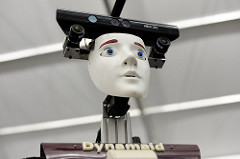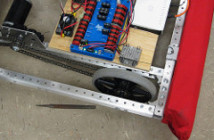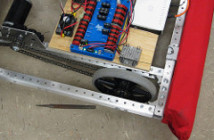Robotics and Automation Are Not the Same And They Need Each Other
Some people think that robotics and automation are the same thing, but actually they are not. If you look closely at robotics and automation they both have distinguishing characteristics, but they are different. They do, however, fit quite well together. In fact, they need each other to exist. The focus of robotics is on physical parts, what might be called hardware. This hardware is made up of actuators, sensors, controllers, conveyors, cameras, and any other devices that can be part of a robot or the system of which it is a part. These systems contain the robotic parts that do work either autonomously or semi-autonomously. All this means is they cooperate with human operators by doing all the work or some of the work that is required. Automation in contrast is more of the actions that robotics take to perform tasks that need to be done. Automation is a group of tasks or processes in manufacturing that are performed to create products.
Robotics and automation have become closer and closer as time and technology have moved forward. If they needed each other before, they need each other even more now. There is an increasing need for the positive result that occurs when robotics and automation get together. The combination of these two can have a positive impact on joblessness and increase the ability of companies to compete in the global markets. You may ask how robotics can decrease joblessness. It takes well-trained employees who are schooled in the installation, maintenance, and operation of robotics to keep robotic systems running. The skills sets that workers have to have on the job in a plant that utilizes robotics will need to be different from the skill sets that were required in the past and even now. As the current workers retire from industrial jobs, the new workers that are going to replace them will be able to program the controllers that are part of the robotic systems. These new workers will also be able to operate and maintain the work cells that contain robotics. The shift of the skill sets of the workforce will be toward technology and away from the predominant manual efforts that were done in the past. This shift occurs because of the characteristics and abilities that robotics bring to the manufacturing work place. Training of these workers in the required technologies has already begun, and the population of workers with this training is going to increase over the next few years.
As robotics and automation co-mingle and technology pushes their abilities to more efficiency in production, the workers that manage them will have a greater dependence on robotics to get the job done. Product intricacies will be more involved in future production. The combination of R and A will be required to produce the most intricate, complex products in extremely demanding environments. The demands of the production environment will require adaptability and precision that has never been required of R and A and their human operators. The limits of complexity in production will far exceed those that humans will be able to perform. The internal organization of manufacturing operations will change so that employees will be made available to support the constant work of automation. There will be specialized support teams formed to service given areas of automated production.
The ultimate combination of R and A allow for the retention of any intellectual property by companies that use them. The combination will keep companies alive by giving them the competitive edge against local and global competition. The employee-base will be expanded due to the number of jobs that will be required for maintenance and operation. Manufacturing operations will transition into a different scheme in that personnel will be the ones that solve the problems to keep manufacturing running. Robotics will perform the precision tasks of creating the products. This will also relieve employees from the harmful safety exposures that occurred in the past in manufacturing. The tandem of R and A will be able to fill the pipeline of finished products much more readily than is currently done.
It will be required that R and A coexist in an even more harmonious fashion. The amount to robotics that is applied to industry is going to increase as time goes forward. The jobs for employees in plants that use robotics will become more technical and less physical in nature. Most of the jobs will revolve around the installation, maintenance, support, and operation of robotics as they do the “heavy lifting” that will be manufacturing.
John Mitchell, the author of this article, is President of Provision, Inc, an online publisher of information about the uses of automation in manufacturing. The company website,http://www.provinc.net, allows companies to submit requests for quotation to automation specialists.





